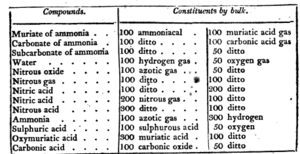Thomas Thomson (chemist) facts for kids
Thomas Thomson (born April 12, 1773 – died August 2, 1852) was a Scottish scientist. He was a chemist and a mineralogist. His writings helped spread Dalton's early ideas about atoms.
Thomson also invented a tool called the saccharometer. This tool measures the amount of sugar in liquids. He also gave the element silicon its name. He was once the president of the Philosophical Society of Glasgow.
Thomas Thomson was the father of another famous scientist, the botanist Thomas Thomson.
Contents
Early Life and Education
Thomas Thomson was born in Crieff, Scotland, on April 12, 1773. His parents were Elizabeth Ewan and John Thomson.
He went to school in Crieff and Stirling. From 1787 to 1790, he studied subjects like history, math, and science at the University of St Andrews. After a break, he went to the University of Edinburgh in 1795 to study medicine. He earned his medical degree in 1799. During this time, his teacher, Professor Joseph Black, inspired him to study chemistry.
Contributions to Science
In 1796, Thomson became an assistant editor for the Supplement to the Third Edition of the Encyclopædia Britannica. He wrote articles about chemistry, mineralogy, and different substances used for dyeing. In his mineralogy article, he was one of the first to use letters as chemical symbols for elements.
In 1802, Thomson used these articles to write his own book, System of Chemistry. Later, in 1810, he published Elements of Chemistry. This book showed how different gases combine in ways that supported the atomic theory. This theory explains that matter is made of tiny particles called atoms.
Thomson started teaching chemistry in Edinburgh in 1802. In 1805, he became a member of the Royal Society of Edinburgh.
Inventions and Discoveries
Thomson was involved in many different activities. He helped the Scottish government with taxes on goods. He also invented a tool called Allan's saccharometer. This device helps measure the density of liquids, often used to check sugar levels.
In 1817, Thomson gave the element silicon its name. He chose this name because he thought it was more like boron and carbon than a metal. He didn't like the earlier suggested name "silicium."
In 1817, Thomson became a professor of chemistry at the University of Glasgow. He taught there until he retired in 1841. In 1820, he found a new mineral. It was named thomsonite in his honor.
Later Life
Thomas Thomson spent his last years in Glasgow. He passed away in Kilmun, Scotland, in 1852, when he was 79 years old. He was buried in Dean Cemetery in Edinburgh. There is also a memorial for him in the Glasgow Necropolis.
Family Life
In 1816, Thomas Thomson married Agnes Colquhoun. He was also the uncle and father-in-law of Robert Dundas Thomson, who was a medical officer.
Awards and Honors
- Member of the Royal Society of Edinburgh (1805)
- Member of the Royal Society (1811)
Artistic Recognition
The artist John Graham Gilbert painted a portrait of Thomas Thomson.
Selected Writings
- System of Chemistry (1802)
- The Elements of Chemistry (1810)
- History of the Royal Society, from its institution to the end of the eighteenth century (1812)
- An Attempt to Establish the First Principles of Chemistry by Experiment (1825)
- History of Chemistry (1830)
- A System of Chemistry of Inorganic Bodies (1831)
- Chemistry of Animal Bodies (1843)
- Outlines of Mineralogy and Geology (1836)
- Chemistry (article in 7th edition of Encyclopedia Britannia) (1842)
From 1813 to 1822, he was the editor of a science magazine called Annals of Philosophy.
In Culture
In June 2011, a Russian artist named Alexander Taratynov made a statue of a French architect. The statue was part of a group of sculptures called The Architects in Alexander Park in Saint Petersburg.
Later, in 2018, someone discovered a mistake. The artist admitted he used a picture he found on Wikipedia for the statue. But the picture was actually of the Scottish chemist Thomas Thomson, not the French architect! The artist blamed Wikipedia for the error, but also himself for not checking with a historian.
Images for kids




